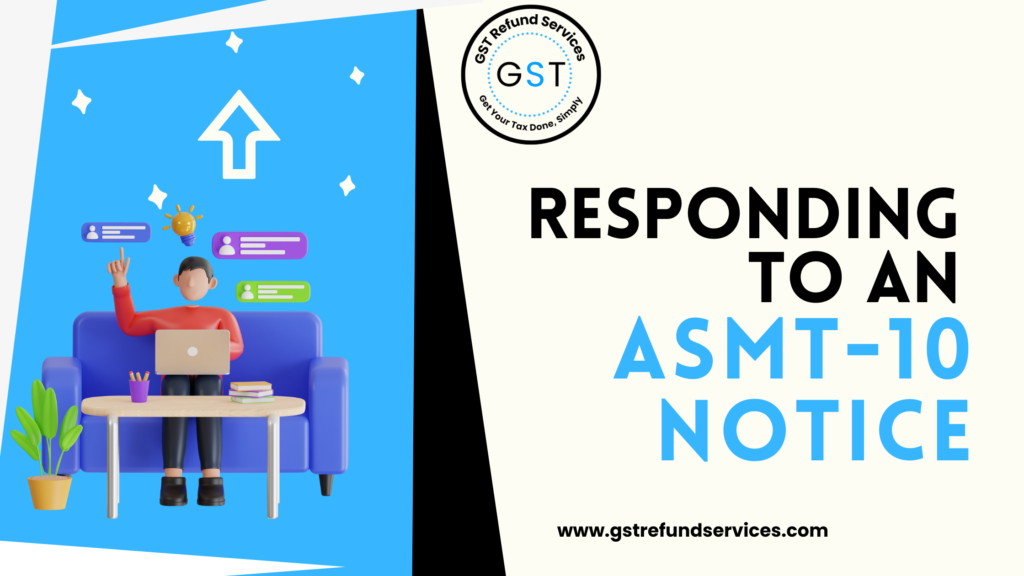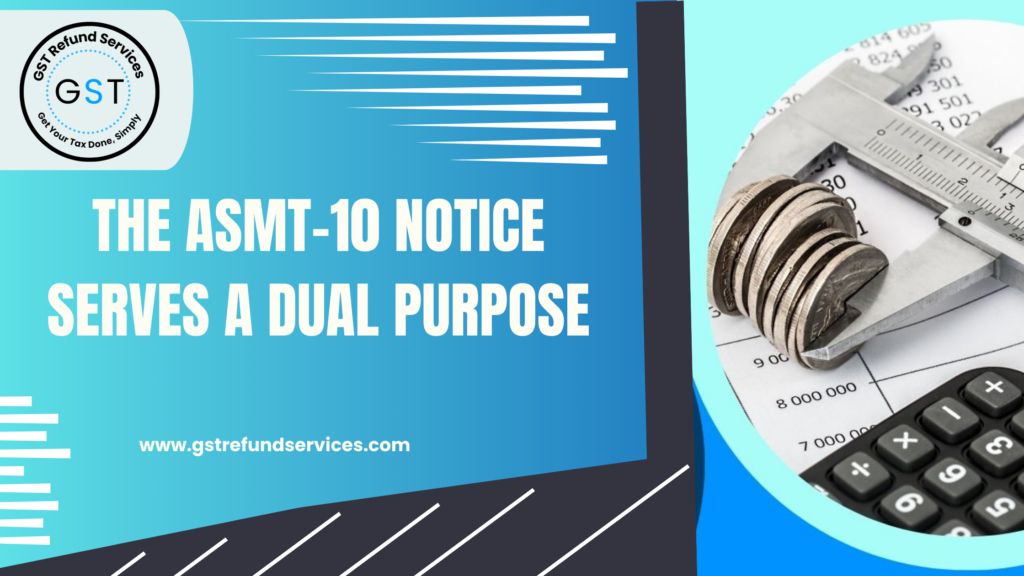Ensure GST compliance with ASMT-10 scrutiny. Address discrepancies, prevent penalties, and enhance accuracy using expert advice and digital tools for precise tax returns.
Purpose of ASMT-10
The Goods and Services Tax (GST) system in India relies heavily on accurate tax return filings by businesses. However, discrepancies can arise unintentionally due to data entry errors or misinterpretations. To ensure transparency and prevent potential non-compliance, the GST department utilizes a crucial tool called the ASMT-10 notice.
Issued under Rule 99 of the CGST Rules, 2017, the ASMT-10 functions as a communication channel between the department and taxpayers. Its primary purpose is to identify and clarify discrepancies found in the GST returns filed electronically. This proactive approach aims to achieve two key objectives:
- Maintaining Accuracy: Discrepancies can throw off tax calculations and potentially lead to underpayment or overpayment of GST. By highlighting these inconsistencies, the ASMT-10 notice encourages taxpayers to review their filings and ensure the accuracy of reported information. This fosters a system of trust and reduces the risk of future errors.
- Preventing Non-Compliance: Inconsistencies in GST returns can sometimes indicate intentional misreporting of taxes. The ASMT-10 notice serves as an early warning system, prompting taxpayers to rectify any deliberate attempts to avoid their tax obligations. This helps minimize potential revenue loss for the government and promotes a level playing field for businesses.
Triggering Factors for ASMT-10 Notices

Several factors can trigger an ASMT-10 notice, prompting the department to seek clarification. These include:
- Mismatches between GST Forms: Inconsistencies between data reported in GSTR-1 (outward supplies) and GSTR-3B (summary returns) or between GSTR-3B and GSTR-2A (inward supplies) can raise red flags.
- Unusual Tax Claims: Significantly high input tax credit (ITC) claims or substantial transactions with unregistered dealers might warrant further investigation through an ASMT-10 notice.
- Irregularities in Tax Payments/Refunds: Unusual patterns in tax payments or refunds can also trigger a notice, prompting the department to understand the reasons behind such fluctuations.
Responding to an ASMT-10 Notice

Receiving an ASMT-10 notice necessitates a prompt and well-supported response from the taxpayer within 30 days. This involves carefully reviewing the discrepancies, gathering relevant supporting documents such as invoices and bills, and addressing each issue clearly and concisely through Form GST ASMT-11. By demonstrating a cooperative and transparent approach, taxpayers can effectively resolve the concerns raised by the GST department.
In conclusion, the ASMT-10 notice plays a crucial role in maintaining GST compliance in India. Its purpose goes beyond simply identifying errors; it fosters accurate tax filing, promotes transparent business practices, and ultimately contributes to a more robust and efficient GST ecosystem.
Why is ASMT-10 Issued?
The Goods and Services Tax (GST) regime in India relies on accurate and timely tax return filings by businesses. However, discrepancies can occur due to human error, complex regulations, or misinterpretations. To ensure transparency and rectify errors, the GST department utilizes ASMT-10 notices, issued under Rule 99 of the CGST Rules, 2017. These notices serve as a crucial communication tool between the department and taxpayers, fostering a collaborative environment for maintaining GST compliance.
Core Purpose of ASMT-10: A Two-Pronged Approach
The ASMT-10 notice serves a dual purpose

- Ensuring Accuracy in Tax Filings: Discrepancies in GST returns can lead to incorrect tax calculations, resulting in underpayment or overpayment of GST. ASMT-10 notices prompt taxpayers to review their filings meticulously, ensuring the accuracy of reported information and fostering trust in the system.
- Preventing Potential Non-Compliance: Discrepancies in GST returns might indicate deliberate attempts to misreport taxes. ASMT-10 notices serve as an early warning mechanism, prompting taxpayers to rectify intentional non-compliance and helping the department identify and address potential revenue leaks.
Receiving an ASMT-10 notice requires a prompt and thorough response:
- Prompt Response: Taxpayers must respond within the stipulated time frame (usually 30 days) to avoid penalties or audits.
- Thorough Analysis: Carefully review the discrepancies highlighted in the notice and identify the root cause of the errors.
- Gather Supporting Documents: Compile relevant documentation to substantiate your response, including invoices, bills, and purchase records.
- Clear Communication: Respond to the notice through Form GST ASMT-11, addressing each issue raised clearly and concisely.
Importance of Responding to ASMT-10 Notices

Failure to respond adequately to ASMT-10 notices can lead to further legal action, including penalties or audits. Therefore, understanding the reasons behind the issuance of ASMT-10 notices and responding appropriately is crucial for maintaining GST compliance and avoiding adverse consequences.
In conclusion, ASMT-10 notices play a vital role in maintaining GST compliance in India. By addressing discrepancies and rectifying errors promptly, taxpayers contribute to a fair and transparent tax ecosystem, fostering trust and accountability in the GST regime.
